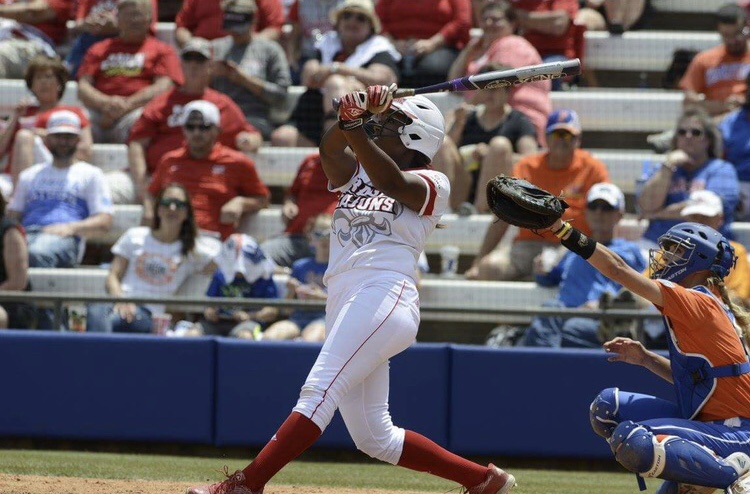
Let’s take a look at Aleah hitting a grand slam on another INSIDE PITCH in the 2016 Sun Belt Tournament.
Let’s break it down. At the outset, we are only interested in swing mechanics that can generate enough bat speed to hit the ball to the OPPOSITE FIELD WITH POWER.
SWING BREAKDOWN
Let’s look at 3 (three) side by side frames from each at bat and see if she adjusted the timing or tempo or amount of her pelvis loading for an inside versus an outside pitch.
1. Aleah starts her pelvis load slightly after 12 o’clock; so the first side by side will be at 9 o’clock in the pitcher’s delivery.
2. At the pitcher’s release; Aleah has a “good idea” of whether the pitch is going to be INSIDE OR OUTSIDE. Horizontal ball movement is usually the easiest pitch characteristic for the fastpitch hitter to recognize. Between pitcher’s release and toe touch, is when the hitter decides to go from pelvis “coil” to “rotation” based on information collected.
3. Aleah is at toe touch; she has definitely recognized inside versus outside – at this point, she is recognizing up versus down (vertical ball movement), and linear change of speeds. So, at this point, Aleah knows & has recognized that one pitch will be inside and the other will be outside.
And toe touch is a “good landmark” to use to assume that the pelvis has transitioned from “coil” to “rotation” & transferred its “energy”.
4. At launch, Aleah’s pelvis is done and the second link of the kinetic chain (torso) is in motion, where more than likely, her barrel path adjustments will happen.
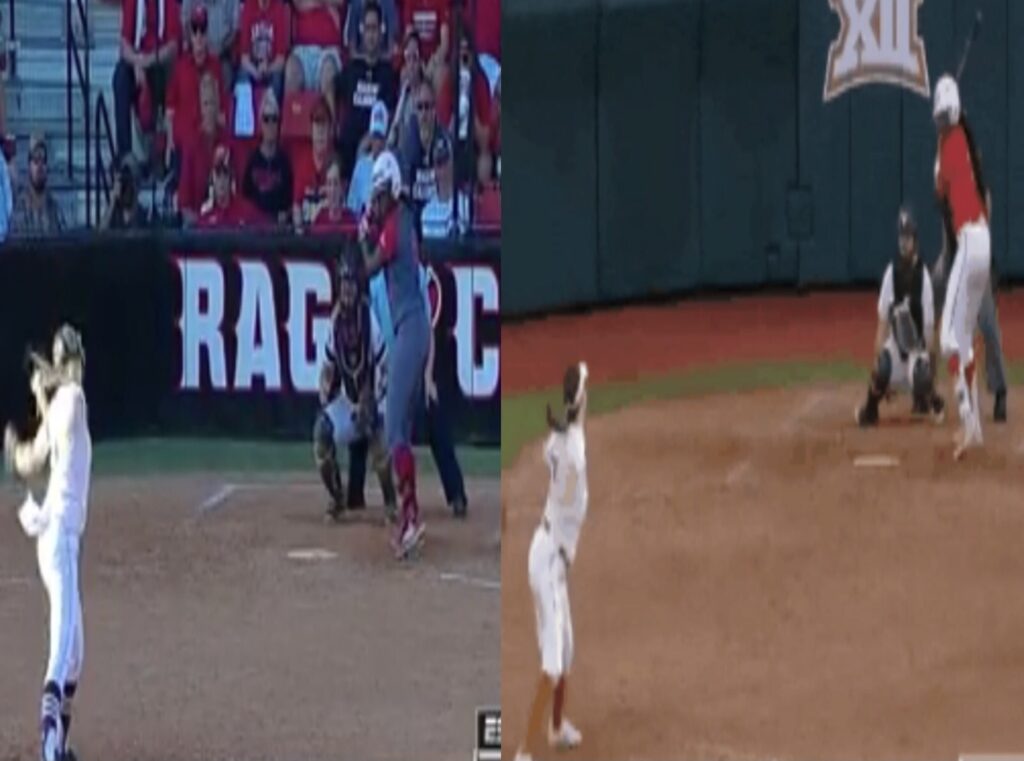
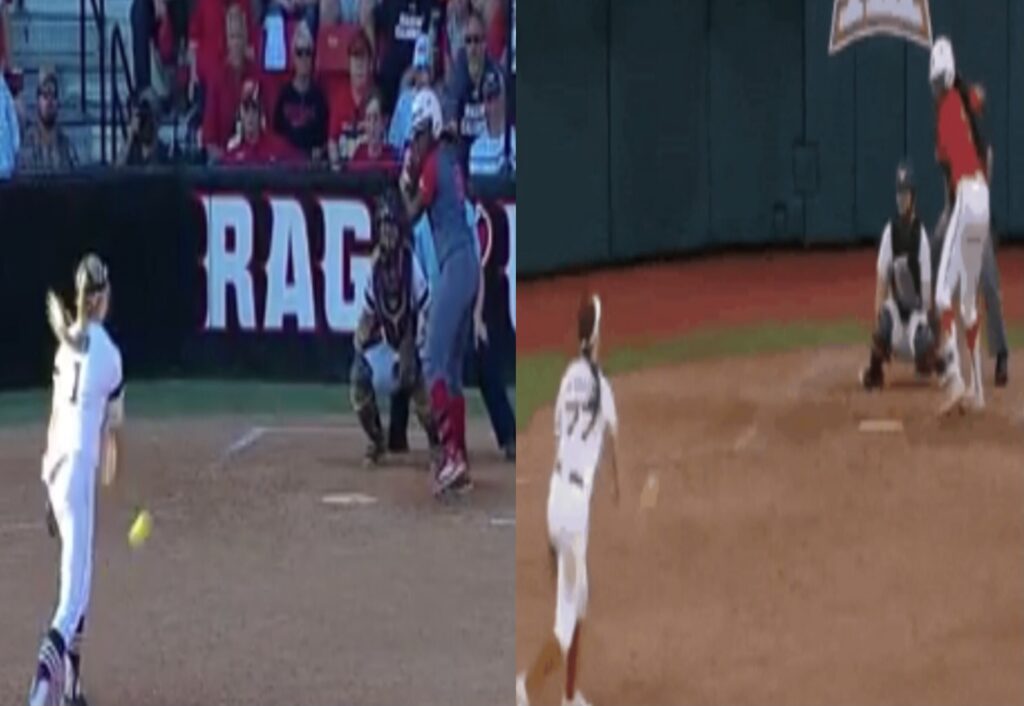
This is where lots of young hitters swings start to “go bad” because they have a tendency to want to “hurry up & get their foot down” or “step in the bucket”, especially if they are not confident & comfortable “handling” velocity on the inside half of the plate.
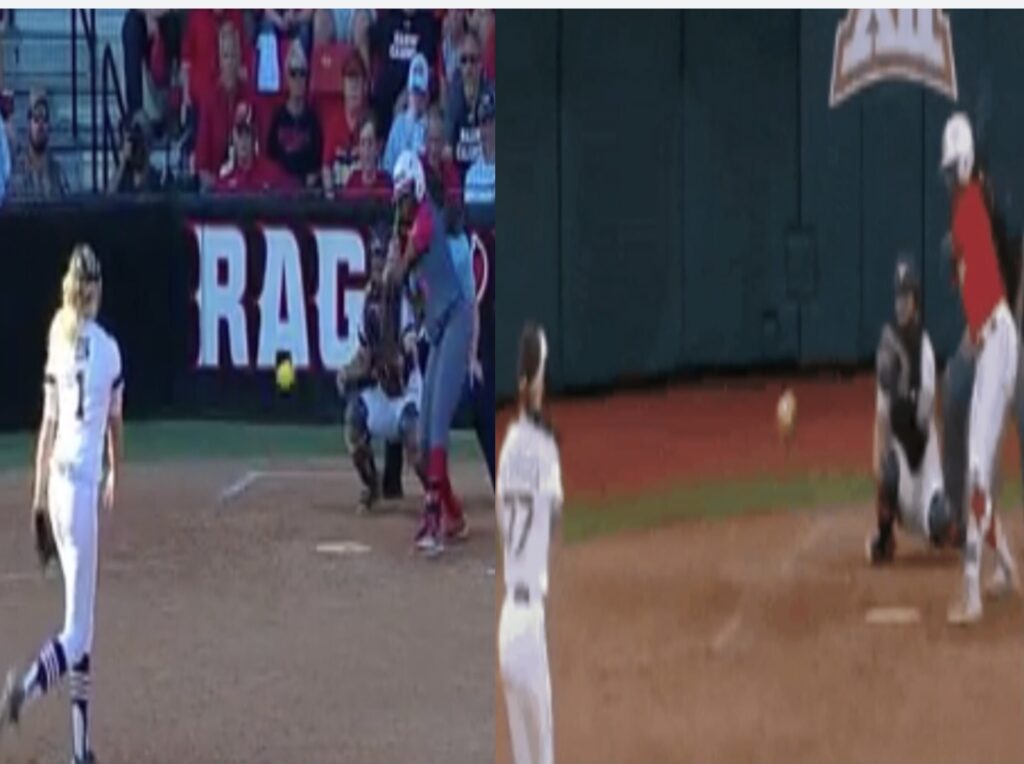
The differences of the rotation of her pelvis are “slight” but OBVIOUS — noted by: (1) the positioning of her stride foot (but emphasis that this is NOT A LEG ACTION, IT IS AS A RESULT OF HER PELVIS ROTATION – proximal to distal) and (2) the location of her belt buckle: on the inside pitch (on the LEFT), more open and on the outside pitch (on the right), more closed.
What’s the mechanical adjustment? Aleah’s major adjustments will be in the next three links of the kinetic chain – her torso, arms, & barrel. You can already start to see some differences starting to occur. Good hitters recognize INSIDE VERSUS OUTSIDE early (soon after the pitcher’s release); if you want to hit both pitches with power, it is essential to “load”, “coil”, and “rotate” the pelvis.
HOW TO MAKE THE MOST OF REDSHIRTING
Aleah REDSHIRTED in 2014 and BECAME AN ALL-AMERICAN IN 2016 & 2017. Same exact script that Christi Orgeron followed; Christi REDSHIRTED in 2008 and was a TWO TIME ALL-AMERICAN IN 2011 & 2012. (READ HER JOURNEY UNDER CAJUNS TOP HITTERS). When ALL-AMERICANS keep repeating themselves after redshirting, it’s not luck or pure coincidence.
What does REDSHIRTING mean & WHY DO IT?
First of all, REDSHIRTING is NOT just sitting around shagging balls and waiting for next year and somebody to graduate so you can play. It’s not about playing time or depth charts at all. It’s about GETTING BETTER. It is NOT about maintaining your “status quo” skill set. The reason you are REDSHIRTING is because your skill set MUST IMPROVE, ESPECIALLY YOUR HITTING.
REDSHIRTING IS ABOUT SKILL ACQUISITION; using the TIME — THE YEAR OF DELAYED ELIGIBILITY TO GET BETTER; to work hard and practice and use the RESOURCES & EXPERTISE OF THE COACHING STAFF TO IMPROVE YOUR SKILLS.
In order to do that, the athlete and the coach have to be willing to “show up” outside of “prime time”. Prime time is when the starters are getting their practice time in & require 100% of the resources & 100% of the coaching staff’s attention.
It is not hitting off of a tee either by yourself during prime time. It’s being creative and imaginative to find opportunities to get QUALITY, GAME-LIKE EXPERIENCE with the guidance and oversight of the coaches AFTER HOURS.
In order to build a better movement pattern involves a lot of hard work and knowing about the use & application of “ATTRACTORS” (READ ARTICLE #1: WHAT IS A SWING ATTRACTOR?).
SKILL ACQUISITION by using the right “ATTRACTORS” is always the first step in the transformation. When to use what drills &/or which gadgets matters. Doing weekly assessments & prescribing individualized, specific functional movement protocols is CRITICAL. KNOWING when & where & what to constrain & knowing how to manage the degrees of freedom issues is as much of an art as it is a science.

Teaching the Central Nervous System a totally different “rate of force development” requires specificity. Engraining it into her memory and learning a totally different data base & pitch recognition patterns took thousands and thousands of repetitions.
It takes lots of video & chalkboard discussions, simulated at bats, live scrimmaging, and lots of visualization/role playing/hypothetical scenarios, etc. “after hours”.
It’s hard work for the coach & the player, but if it is done right, it is so intrinsically fulfilling — and even years later when watching those home runs in magical moments, it still gives you chills & brings the biggest smile to your face.
AWARDS & HONORS
Aleah is ALWAYS a pleasure to be around with a great perspective!
Below are a listing of some of Aleah’s awards and honors while at UL for 4 years, from 2014 (redshirt) through 2017, before transferring to Arizona for her senior season (2018). She was a PRE-MED MAJOR WITH HONORS and served on the Student Athletic Advisory Committee. She was recognized as the CONFERENCE’S FEMALE ATHLETE OF THE YEAR AS A JUNIOR (ALL SPORTS, ALL INSTITUTIONS) for her athletic & academic achievements and for her community involvement, leadership and taking a “stand” to make a difference.
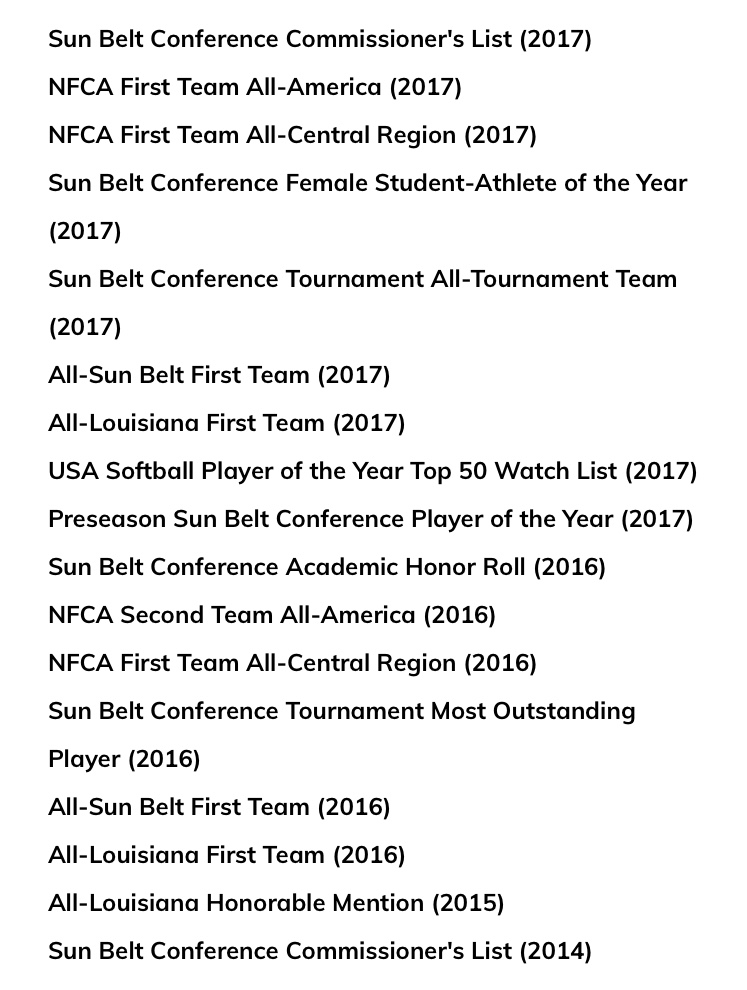

Be assured, that the experiences of college softball taught her to become a fierce competitor & a strong, confident woman; and will also guide her in MAKING A DIFFERENCE in her community and in the medical profession.
PURSUE EXCELLENCE & WIN THE NEXT PITCH!
